Inspect mattresses, bed frames, and the seams of furniture thoroughly for any signs of bed bugs, including live insects, shed skins, tiny eggs, and small dark droppings.

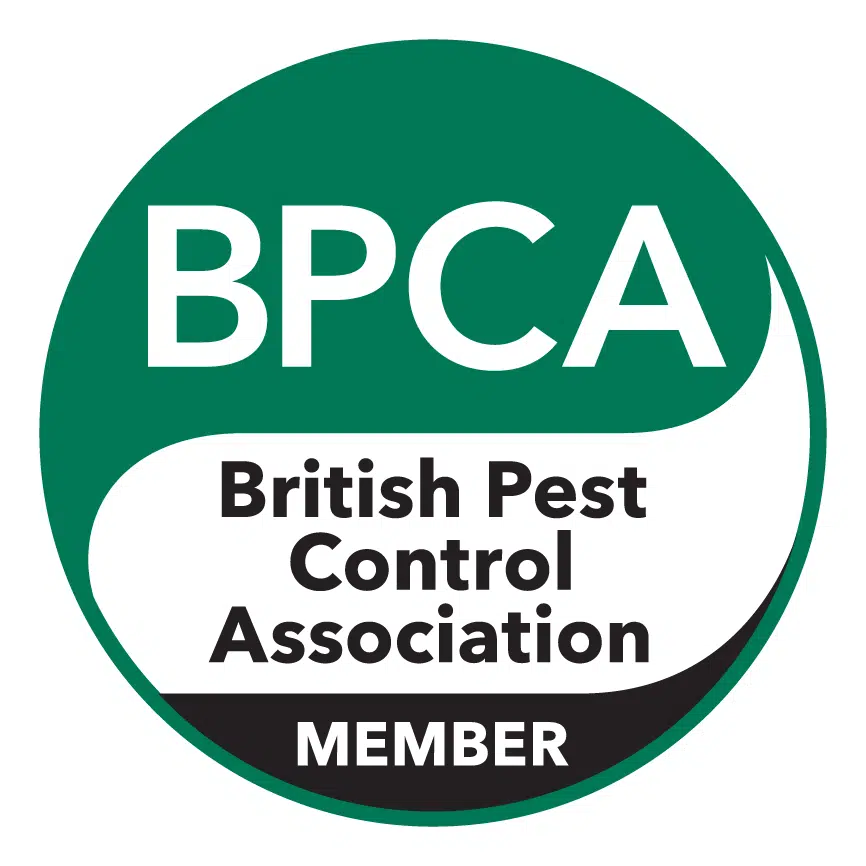
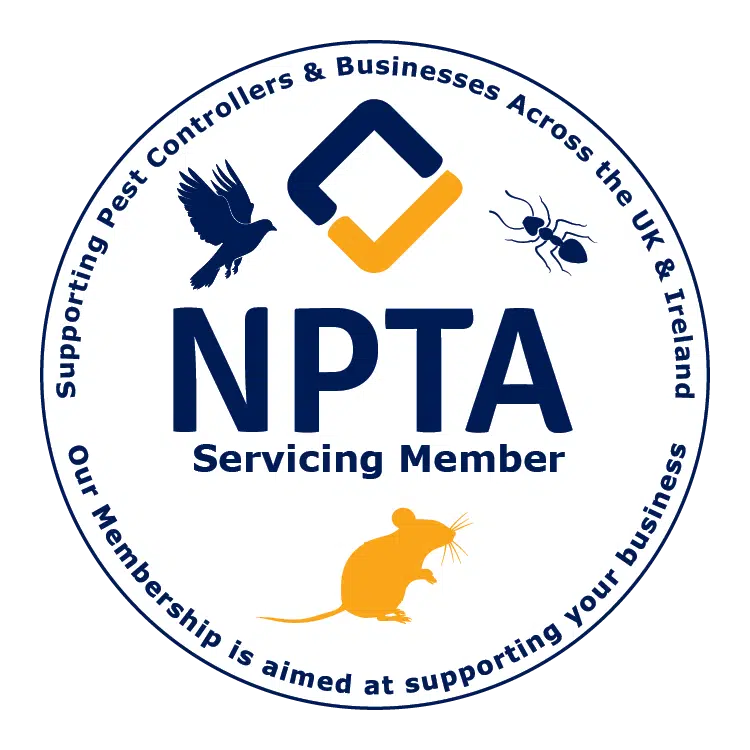
When checking for bed bugs, recognising the signs and knowing what these pests look like is crucial for early detection.
Bites on Skin: Bed bug bites often appear as small, red, itchy welts. They can look similar to mosquito bites or hives and may cause a mild to swollen reaction in most people. However, some people do not react to bites at all, making other signs more important.
Blood Stains: You might notice tiny rust-coloured or blood stains on your bedding or mattresses, which occur when bed bugs are crushed after feeding.
Dark Spots: Small dark or black spots on mattresses, bedding, or furniture are bed bug faecal spots, a clear sign of infestation.
Shed Skins and Eggs: Bed bugs shed their skins as they grow. These pale yellow, translucent exoskeletons can be found in hiding spots. Tiny, pearly-white eggs about 1mm in size are often clustered in crevices.
Musty Odour: In heavy infestations, a sweet, musty odour may be noticeable, caused by bed bug scent glands.
Bed bugs are small, oval-shaped, and wingless insects, typically about 5-7mm in size—roughly the size of an apple seed. Their colour varies depending on feeding status:
Unfed Bed Bugs: Pale yellow or light brown.
Fed Bed Bugs: Reddish-brown and swollen after feeding on blood.
Bed bugs have flat bodies that allow them to hide in narrow crevices such as mattress seams, box springs, bed frames, couches, and cracks in walls. Their small size and ability to hide make them difficult to spot, so thorough inspection is essential.
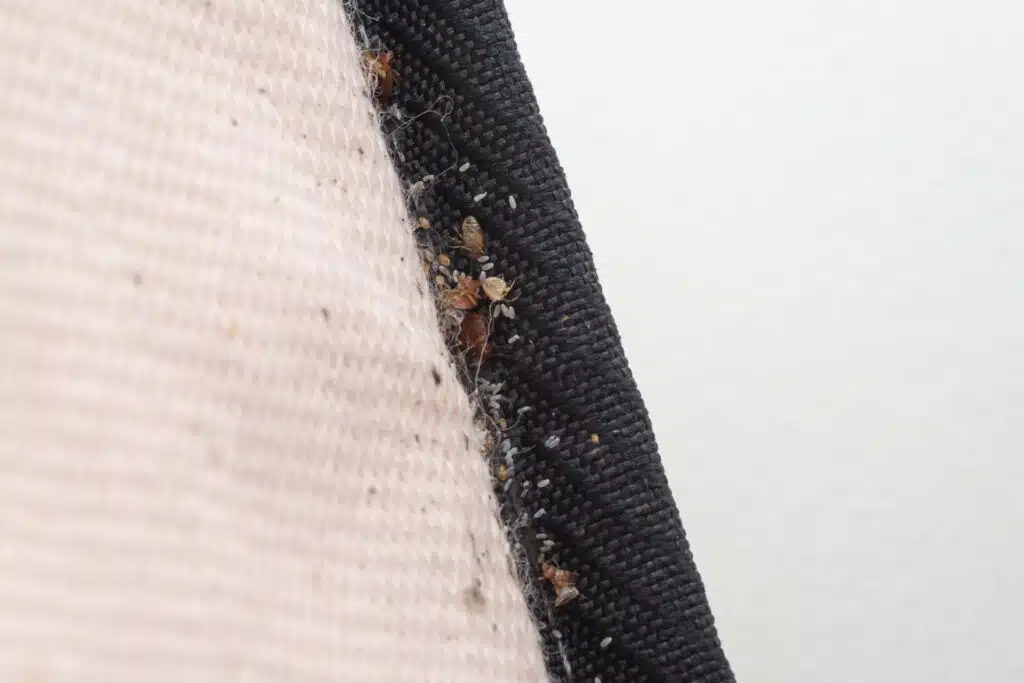
Detecting bed bugs at home begins with a careful inspection of sleeping and resting areas. These tiny pests are brilliant at hiding, so you’ll need to be thorough and patient. When checking for bed bugs, a flashlight and a flat-edged tool are essential and this guide will teach you how to check for bed bugs effectively:
The bed is the main hotspot for bed bugs, as they like to stay near their food source—you. Focus on these key areas:
Tip: Use a magnifying glass if needed—bed bugs and their eggs are small and easy to overlook.
Bed bugs aren’t confined to beds. They can spread to nearby furniture and walls, so widen your search:
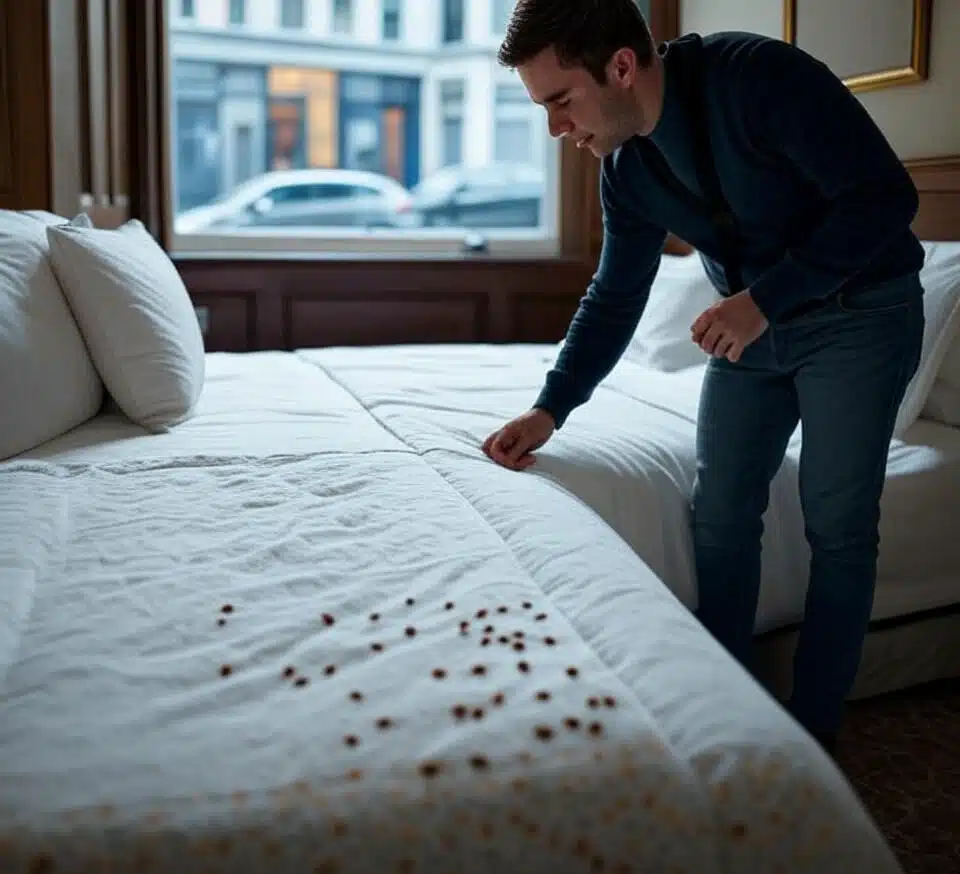
Bed bugs can easily hitch a ride on your clothing, luggage, and other personal belongings, especially after travel. To prevent bringing these pests into your home, it’s important to inspect and handle your items carefully:
Inspect Luggage Thoroughly: Before unpacking, examine your suitcase inside and out, paying close attention to seams, pockets, and folds where bed bugs may hide. Use a torch to spot any live bugs, eggs, or tiny dark droppings.
Check Clothing Carefully: Look over your clothes, especially those worn during travel, for any signs of bed bugs. Focus on seams, cuffs, and folds. If you notice bites or suspect contamination, isolate the clothing in sealed plastic bags until washing.
Wash and Dry Immediately: Upon returning home, wash all travel clothes in hot water (at least 60°C) and tumble dry on a high heat setting for at least 30 minutes. Heat effectively kills bed bugs at all life stages, including eggs.
Handle Items with Care: Avoid bringing luggage or clothing directly onto beds or upholstered furniture. Instead, place bags on hard surfaces like bathroom floors or metal racks to reduce the chance of bed bugs spreading.
Consider Freezing Non-Washable Items: For items that cannot be washed, such as shoes or delicate fabrics, placing them in a sealed plastic bag in the freezer for 3-4 days can help eliminate bed bugs.
By following these steps, you can reduce the risk of bed bugs traveling with you and infesting your home, keeping you and your belongings safe.
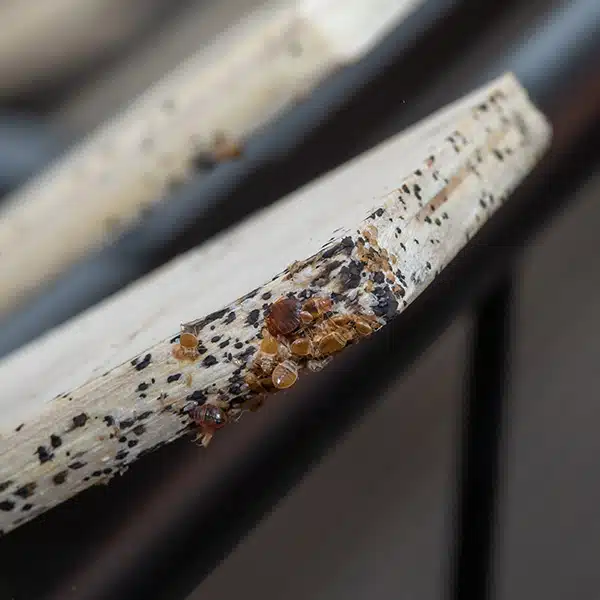
Some bed bugs hide in tricky spots. Equip yourself with the right tools:
Tip: Wear gloves to avoid direct contact with bugs or allergens they leave behind.
If you suspect bed bugs but haven’t found solid evidence, traps can help:
Travelling can expose you to bed bugs, especially in hotels. To avoid bringing them home, take these precautions upon arrival:
While these steps can help you check for bed bugs, identifying and eliminating an infestation can be challenging. For expert assistance, contact ThermoPest—your local bed bug specialists. Our trained professionals use advanced techniques and equipment to detect and eradicate bed bugs quickly and safely, giving you peace of mind. Reach out to us today for a thorough inspection and tailored treatment plan.
The most effective way to rid your home of bed bugs is through heat treatments. Unlike chemical sprays, which may not kill bed bug eggs, heat treatments raise the temperature in a room to a level that bed bugs cannot survive.
Heat treatments are great because it kills bed bugs in all life stages – including bed bug eggs and nymphs. The heat reaches deep into crevices where bed bugs hide.
Heat treatments use no harmful chemicals. This makes them safe for homes and businesses. And heat treatments are usually a one-time treatment – unlike traditional methods that require multiple applications.
If you have a bed bug infestation, pest.co.uk’s heat treatment service ensures complete eradication.
Leading experts in bed bug control
Guaranteed quick and rapid responses to urgent infestations
For ongoing problems, use our preventative contracts
To check for bed bugs, perform a systematic inspection of your sleeping area using a bright torch. Start by examining the mattress seams, piping, and buttons. Look for black faecal spots that resemble felt-tip pen marks; this is digested blood. You may also see rusty blood smears on sheets or translucent shed skins (exoskeletons).
Call us on 0808 189 2310 – or complete our quote form below.
Speak to a bed bug expert today!
Enter Your Details To Request A Call Back
Enter Your Details To Request A Call Back
Enter Your Details To Request A Call Back
Enter Your Details To Request A Call Back
Enter Your Details To Request A Call Back
Enter Your Details To Request A Call Back